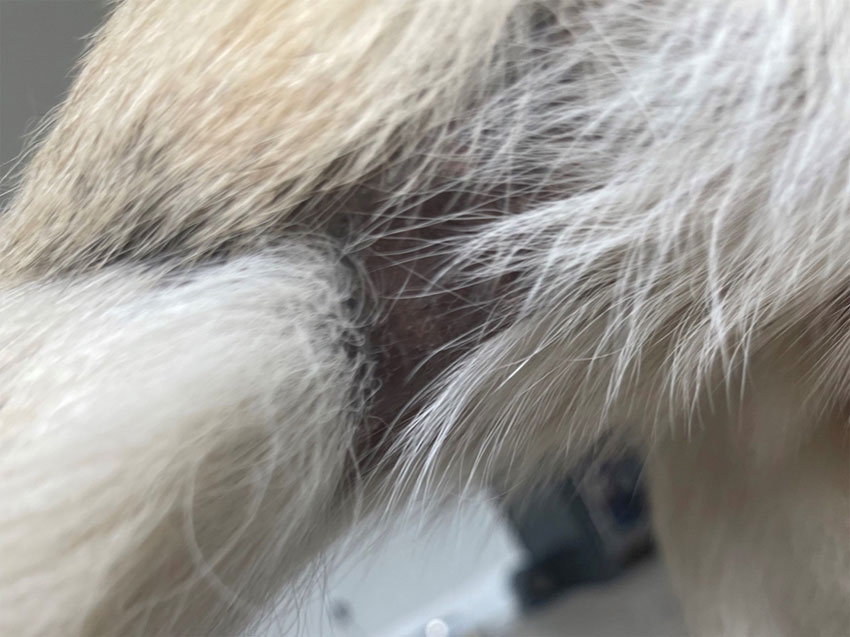Three year old English Mastiff develops an infection in the tail. The analysis shows that it is caused by a multi-resistant Staphylococcus pseudintermedius – necrotizing fasciitis, also commonly called flesh-eating bacteria. Amputation is recommended, but the owner wants to try to save his dog’s tail.
SertaSil is sent by courier to Texas, US and treatment started immediately. It consists of very thorough daily washing with tap-water followed by gently drying and the application of a fully covering layer of SertaSil. The wound is not covered by a dressing. SertaSil is used once daily for 4 days after which only tap-water and access of air is used, except for a single application Day 34.
No complications occurred during the treatment. The wound closed fully and has remained closed.




































